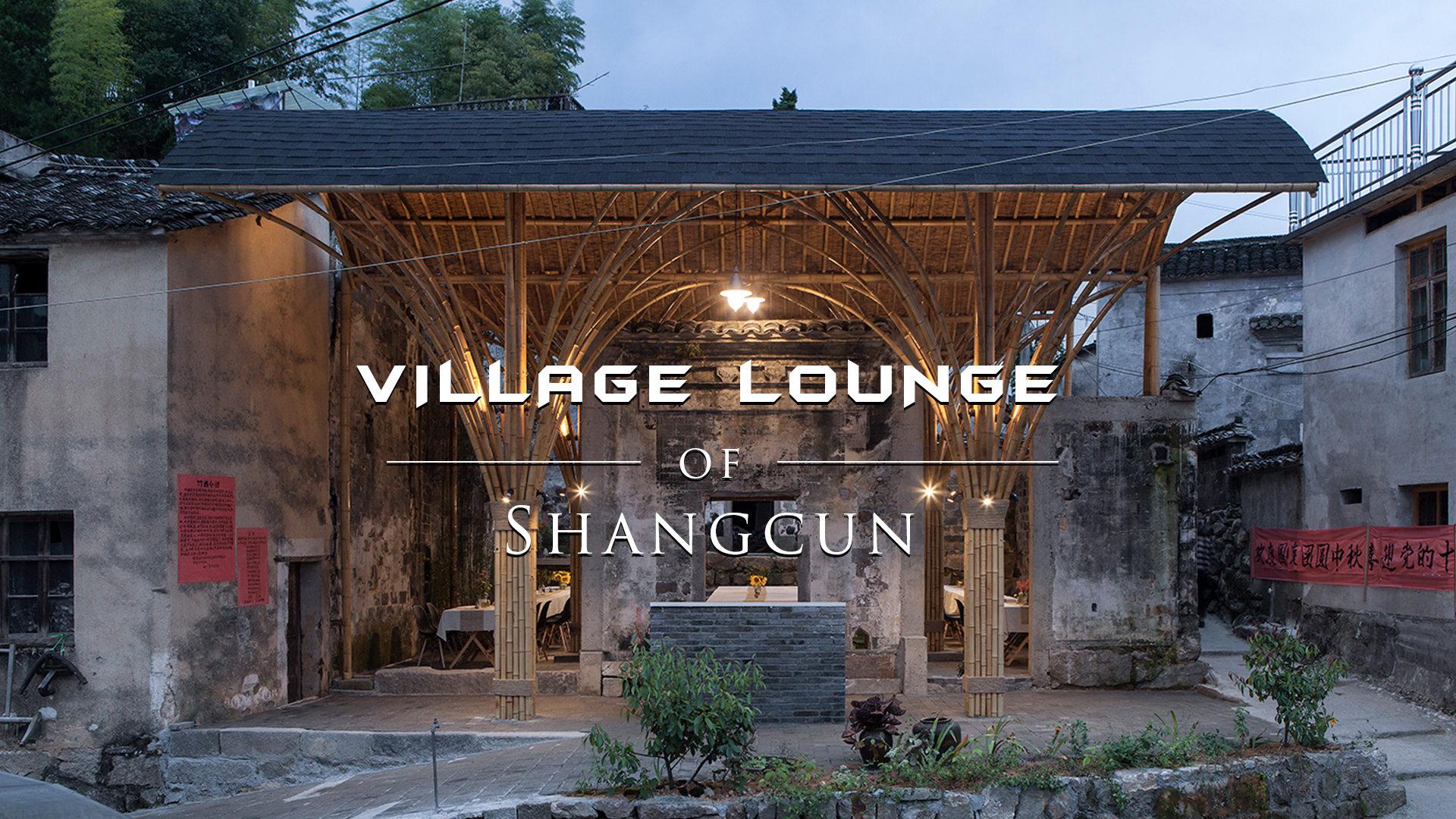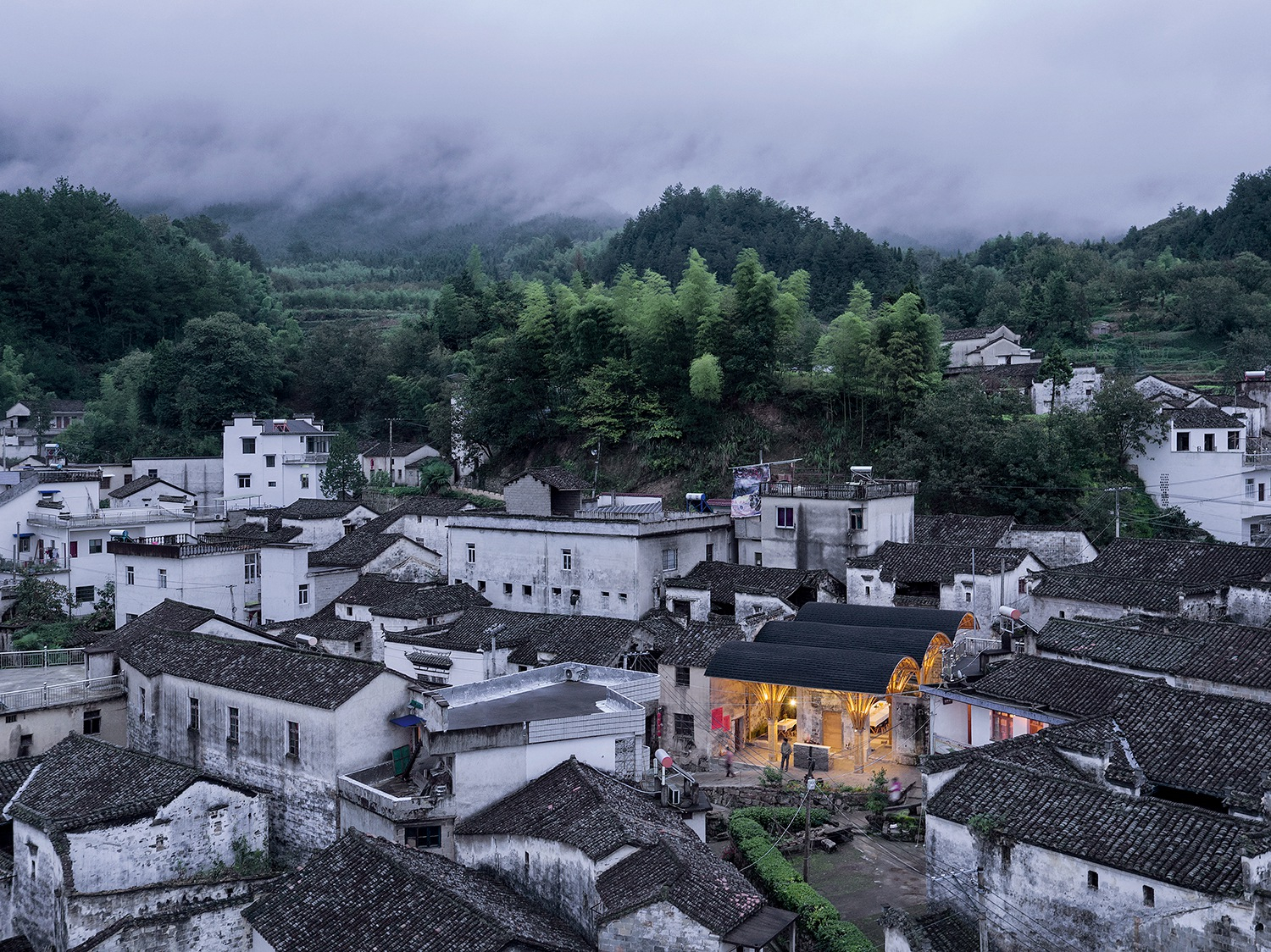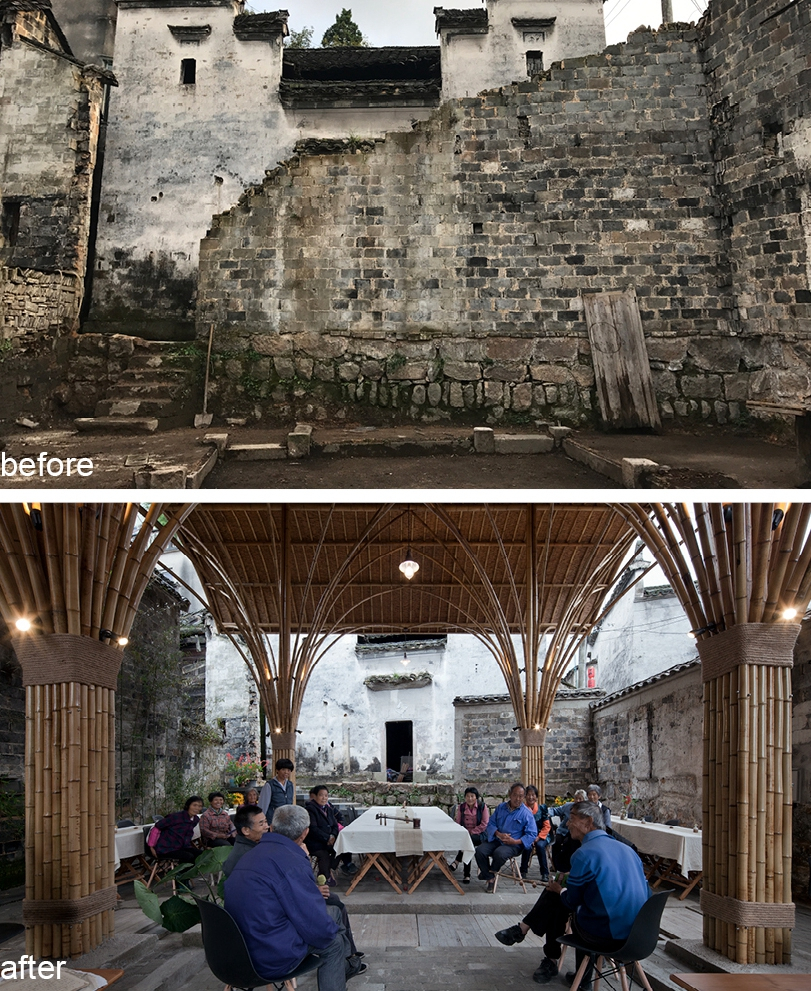

For architect Song Yehao, good news continuously come in over the last two months.
His two bamboo-made projects Swirling Cloud Pavilion and Village Lounge of Shangcun were honored at the Architizer A+ Awards in the U.S. and the Iconic Awards for Innovative Architecture in Germany, and the former project was also included into the shortlist of 2019 World Architecture Festival in the UK.
"Design from the aspect of sustainability and the surroundings of the building, I think these two points are the important basis for our projects to strike a chord with the international architecture field," said Song, director of SUP Atelier architectural firm and professor at the School of Architecture, Tsinghua University.
Bamboo, a sustainable material
On one side of the square between the main gate and the main building of the Beijing Forestry University stands the Swirling Cloud Pavilion.
Situated among luxurious tall trees, it was built as the main exhibit and information center for the school's Garden Festival in 2018, in which another 15 bamboo-made gardens, designed and built by university student teams domestically and abroad, were displayed.

Swirling Cloud Pavilion by SUP Atelier. /Photo by Chen Su and Fang Chun, courtesy of SUP Atelier
"Bamboo may play a big role in the future of architecture," said Song. He explained that bamboo, along with wood and steel, can be recycled, while concrete, a mainstream material for modern buildings, can only be reduced to solid waste.
For cities, construction waste takes a big part of solid waste, putting a burden on the environment. Therefore, environment-friendly bamboo "may become a material that has great market potential," although it has a relatively short service life.
"I favor bamboo. Even if it is rotten or goes moldy, it can be easily replaced," said Song, adding that with modern processing technology, the service life of bamboo can extend to 20, even 50 years in some circumstances.
He sees bamboo as a great material for landscape architecture such as Swirling Cloud Pavilion, impermanent buildings such as the Village Lounge of Shangcun, and for decoration and pavement.
Song's pursuit of sustainability is also mirrored in his use of natural resources and energy in architecture.
"We are exploring sustainability in a natural environment, such as natural lighting, natural ventilation, and thermal protection to use less air conditioner and heating," said Song, emphasizing that sustainability is his priority in doing any project.

Sustainable development in rural areas
"The second consideration in design is the building's surroundings. No matter whether it is in a village, a highly populated big city, or a small community," said Song.
The Village Lounge of Shangcun is located in Shangcun Village, Jixi County, Anhui Province, a place belonging to the ancient administrative region Huizhou, where architecture, stone carving, theater, cuisine and other aspects have their own distinctive style.
"Shangcun Village is both typical and atypical old village in Huizhou," said Song.
He said the village is typical in that it inherited the Huizhou architectural style and traditional craftsmanship but also atypical in that unlike the Huizhou villages where the Oscar-winning film "Crouching Tiger, Hidden Dragon" was shot, it does not get a lot of tourists.
Shangcun also has the added challenge of dealing with its youth leaving the village for greener pastures in big cities. The loss of labor force negatively affects the development of the area, which is increasingly populated by the very old and young.
These are some of the issues that linger in Song's mind when designing the lounge. "It has been 41 years since China's reform and opening-up. The first-generation of farmers-turned migrant workers are now in their sixties. Some of them chose to return to their rural home rather than staying in cities," said Song.
In Shangcun, many of the returning migrant workers used to be construction workers. They know how to use reinforced concrete to construct a building, as well as traditional craftsmanship in woodwork, tiling and stone carving.

Soft light emanates from the Village Lounge of Shangcun in Jixi County, Anhui Province. /Photo by Xia Zhi, courtesy of SUP Atelier
"We just gave the design drawings and directed the construction. The villagers themselves pay, construct, use and repair the lounge," said Song. A total of 19 villagers participated in the construction of the lounge. The average age was 61.
The villagers have hosted everything from banquets and lantern shows to singing and film screening at the lounge since its establishment in 2017.
"We design for farmers and the development of rural areas," said Song, "The international community can perceive that Chinese architects are dealing with social problems. This is the value of design."
Opportunities and challenges for Chinese architects
With the progress of China's urbanization since the reform and opening-up in 1978, construction sites have been seen everywhere from big cities to small villages, providing a huge stage for architects to display their talents.
In recent years, an increasing number of Chinese architects and projects have been honored with international awards. For example, Wang Shu, professor and head of the architecture school at China Academy of Art, became the first Chinese architect to win the prestigious Pritzker Architecture Prize in 2012.
Also, in the 2019 Architizer A+ Awards, besides Song's two pieces, 23 projects from China won a total of 28 awards in 83 categories.
Marcus Fairs, editor-in-chief of the world-leading architecture and design magazine Dezeen, wrote an article in April, saying that "China is fast becoming the world's creative superpower" in architecture and design.

The photos of changes to the Village Lounge of Shangcun. /Photo by Xia Zhi, courtesy of SUP Atelier
"Chinese projects are not only characterized with China's national conditions but also deal with issues that concerned in the international context," Song said, "Winning awards symbolize a wide recognition of China's design level."
But there is still a lot of room for growth and improvement. Song himself has encountered a language barrier and architectural concept conflict.
When Village Lounge of Shangcun was shortlisted in the World Architecture Festival in the category of New and Old last year, he met the jury to explain the project and found that the Western idea of reconstructing an old building is very different from that of Chinese architects.
"Diversity and conflict is not a bad thing. Where there are more conflicts, there is more room to learn from others' strengths and improve ourselves," said Song.
He said the principle of "two heads are better than one" is also true in design. "We should not only pay attention to the architectural development in the Chinese- and English-speaking world but also to that of the German- and Spanish-speaking world and others. There is much to learn from and exchange."
(Cover image of Swirling Cloud Pavilion by Chen Su and Fang Chun, video of Village Lounge of Shangcun and its cover image by Xia Zhi. All copyright belongs to SUP Atelier.)
Director: Wu Yan
Video editor: Ge Ning
Filmed by Shen Hui
Text by Wu Yan
Top image designer: Sa Ren
Copy editor: Katrin Büchenbacher
Producer: Si Nan
Chief editor: Xu Jian

Copyright © 2018 CGTN. Beijing ICP prepared NO.16065310-3
Copyright © 2018 CGTN. Beijing ICP prepared NO.16065310-3